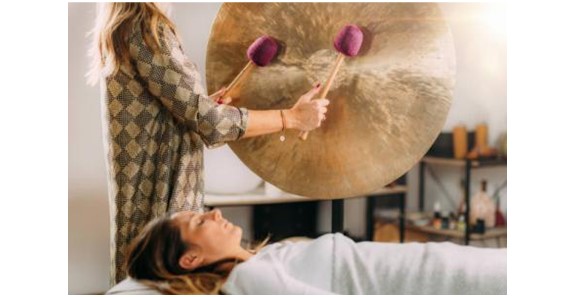For centuries, gongs have been a vital part of Asian culture, from China to Indonesia, and India to Vietnam. These large, flattened metal discs, often elaborately decorated, produce a rich, resounding tone that captivates listeners and reveals the distinct soundscape of Asia. The beauty of gongs is not just their sound but also their visual appeal, as they are often intricately designed and crafted, making them a work of art that adorns homes or spaces.
A Brief History of Gongs Instrument: Tracing Its Cultural Roots
The roots of gongs can be traced back to ancient China, where they were initially used as a warning signal during military campaigns. Over time, they took on different roles, such as in ceremonies and religious rituals. Gongs quickly spread to other parts of Asia, such as Indonesia and Java, where they became an important part of the gamelan ensemble. They were also used as a signaling tool in India and Tibet, and in Japan, they have been used in court music since the Nara period.
Types of Gongs: From Bronze to Bamboo and Everything in Between
-
Bronze Gongs:
These are the most commonly used type of gongs and have been in use for thousands of years in China. They are made by shaping a sheet of bronze alloy into a flat disc, which is then hammered until it produces the desired sound.
-
Bamboo Gongs:
These gongs are made from bamboo, and are primarily used in Southeast Asia, particularly Bali and Java. These gongs have a unique sound and often used as part of the sacred gamelan orchestra for traditional ceremonies and spiritual rituals.
-
Suspended Gongs:
These are the largest of the gongs and are often placed vertically or at a slight angle. They are struck with a padded mallet, and their sound reverberates long after the initial strike has subsided. These are often used in symphonic orchestras or for solo performances.
Wind gong: https://dorhymi.com/wind-gong/
The Resounding Beauty: Exploring the Unique Soundscapes of Gongs
Gongs produce a complex and unique sound that ranges from deep and resonant to high and piercing. This sound is produced by the vibrations of the metal plate as it is struck, and can be influenced by factors such as the thickness of the metal, how it’s suspended, and even the type of mallet used. One of the most interesting things about the sound of a gong is its overtones. Like many other non-pitched percussion instruments, gongs have multiple overtones that are produced when struck in specific areas. This creates a sound that is almost otherworldly and one of the most distinctive features of a gong.
Gongs in Traditional Ceremonies: From Birth to Death
Gongs play a vital role in many traditional Asian ceremonies, from birth to death. For example, in China, gongs are often used during weddings to announce the arrival of the bride and groom. In Bali, gongs are an essential part of the traditional gamelan orchestra, which plays during religious ceremonies such as weddings and funerals. In India, gongs are used in yoga and meditation classes to provide a calming, tranquil sound.
The Modern Era: Gongs in Contemporary Music and Art
Gongs have also found a place in contemporary music and art. Many rock bands, such as the Rolling Stones and Pink Floyd, have incorporated gongs into their music, adding a unique texture to their sound. Artist and composers have also been drawn to the visual aspect of gongs, using them as a sculptural element in installations and exhibits.
Conclusion
Gongs are a vital part of Asian culture, with a rich history that spans thousands of years. From their early use as a warning signal to their role in traditional ceremonies, their unique sound has captivated listeners for generations. Whether used in traditional or contemporary settings, gongs continue to provide an enchanting sound and visual artscape that truly capture the beauty of Asia.
